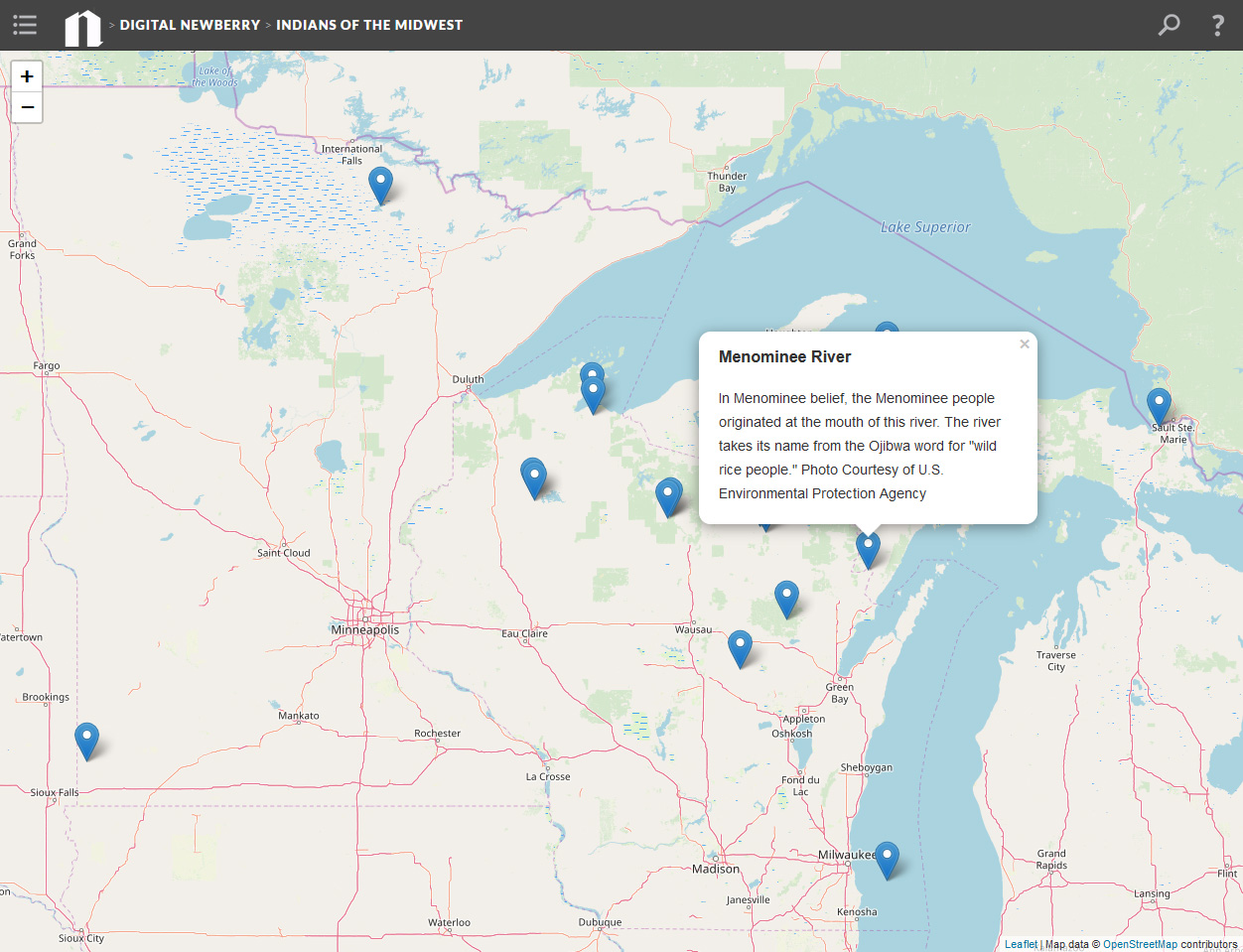The Homeland & Its Use
Above: Dakota Woman Preparing Buffalo Hide. Painting by Seth Eastman in Mary H. Eastman, The American Aboriginal Portfolio (Newberry Library, Ayer 250.45 .E2 1853). View catalog record
Today Native people in the Midwest hunt, fish, gather wild rice, and use products of the forest in ways that both reflect their histories and reinforce their identity as modern Native people. Sites for subsistence activity are scattered through the Midwest, and today Native people consider many of these to be sacred. After years of struggle, Native people recently obtained their treaty rights to hunt, fish, and gather off their reservations. What followed was a massive commitment of tribal resources to protecting fisheries, rice habitats, and forestry for all the citizens in their states. These are the issues that are explored in this section.
How can subsistence activity be a religious act?
Obtaining food required help from spirit beings, and prayers and appropriate rituals helped individuals gain this assistance. Go to "Land, Water, and Forest" for more detail
What is the role of scholars in court cases and public policy about Great Lakes natural resources?
Scholars help the courts interpret treaties and implement court decisions. Go to "How We Know" for more detail
What do treaties have to do with fishing and harvesting rice?
The right to subsist on the flora and fauna of the areas ceded by tribes is preserved in the treaties signed between certain tribes and the federal government. Go to "Treaty Rights" for more detail
